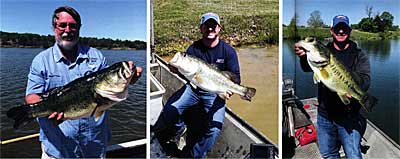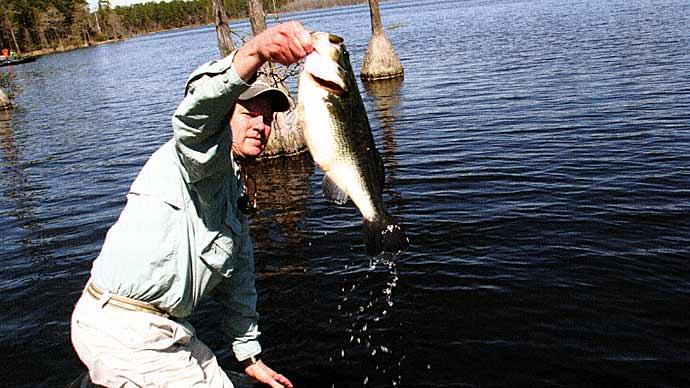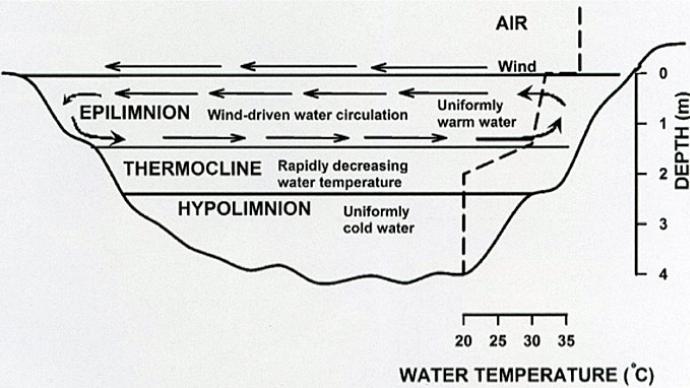
Get ready for some old-fashioned preachiri. Water. It's a big deal. Wars have been fought over it, lawsuits have been filed to seize it, and seems there's always pending legislation to force the citizenry what to do with water.
It's even been turned into wine.
We cherish water.
If you have a pond and its water isn't happy, its inhabitants won't be happy, either. There's a long-time phrase out there, Happy Water, Happy Life... 'er something like that.
You can have the best bass habitat on the planet, stock your waters by the book, feed the fish, all that good stuff. But if your water smells like a parking lot carnival outhouse or upchucks quarter-sized wads of gooey muck late in the afternoon, your water may not be happy.
How do you know if your water is happy?
When the chemistry complements the biology, and the biology complements the chemistry, water has the beginnings of happy. Add autonomy of temperature, thermal refuge zones, a healthy interface with the pond bottom and vibrant biota, it's closer to true happy. Add movement—vertically, diagonally, and/or horizontally, and your water is almost exhilarated. What caps its happiness is fresh exchange. Exchange with fresher water, exchange of gases, exchange of location, exchange.
Remember one of the rules of water. We don't keep it. We borrow it. Your water is always coming or going.
Another rule of water—Scientists call it the "universal solvent". Anything that can dissolve into water, will. Water dissolves stuff, stuff dissolves into water. Water also absorbs and is absorbed. Let that soak in.
The physics of water is important. Water at 39 degrees is as heavy as it gets. Warmer and colder than that temperature, water expands. Ice floats. Steam rises. Temperature influences your pond's water. Think thermocline.
Tie all those things together in a nice package and you can begin to understand what it takes for water to be happy. Each of those elements influences your water's happiness.
Here's how that works. Your water chemistry affects biology. Minerals dissolved into water can act like Turns after a late-night bowl of three-day old chili in a ticklish belly. Alkalinity is your pond's antacid. With alkalinity north of 40 parts million, up to 150ish, and your pond can stabilize its pH. Everyone thinks of pH having an impact. pH is like a ruler. It's a measurement, not something tangible. It's calcium carbonate dissolved in water that keeps pH smooth. Plants growing in water affect pH. If your alkalinity is low, the pH will rise and fall as plants respire and photosynthesize. That means acid goes up and down. Most fish don't like that. If they are busy trying to survive unhappy water, they can't thrive.
Biological activity is activated, or de-activated for that matter, by temperature. Think about this spring. Coming out of winter, cattails were dead, tan-colored leaves collapsing on each other. Then, almost like magic, new growth sprang from the shore, reaching to the sky to absorb its speed from light. A few days rustle by and cattails are six-feet tall.
All these forces act and interact to cause nature's way. Your water is the medium for transport. It's the vehicle.
If you can manage and mitigate the peaks and valleys, your pond will go a long way to providing its happiest water.
At ground level, that means thoughtful aeration. Move the water to capture autonomous gas escape, steady temperature, and predictable quality from the top down... or the bottom, up. Thoughtful aeration means moving water to interface with the atmosphere without compromising thermal refuges for fish. In the south, it means bottom-diffused aeration during the coolest hours of the day during hot months.
Happy water loves movement.
Happy water also loves productivity. The base of the food chain grows in the water column, producing food for the next trophic level, insects and newly hatched fish. Happy water loves native plants, in low to moderate amounts. Plants add oxygen during daylight hours. Some plants glean nutrients or sediment from the water.
Here's your take home point from this article. Happy water is consistent and steady. It's not on a chemistry or biology roller coaster. As steady as you can manage it, your water will reward you with a thriving ecology. That means healthy stands of good plants, a dynamic food chain that supports a thriving fishery.
As you think about your pond, study its water color. Take notes. Monitor the temperature. Have a lab check chemistry a couple times of year to compare.
After all, Happy Water, Happy Life... right?
Reprinted with permission from Pond Boss Magazine



